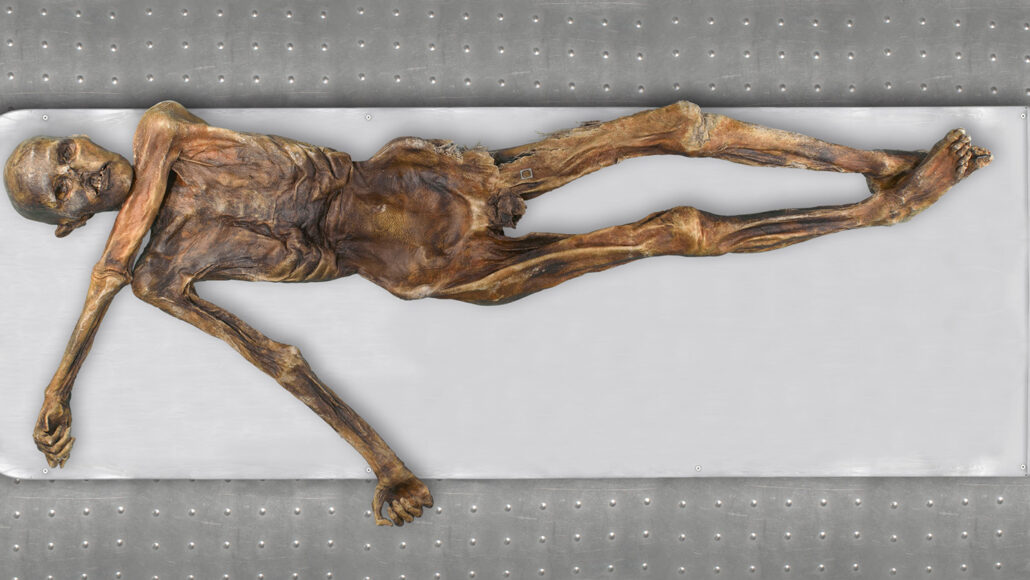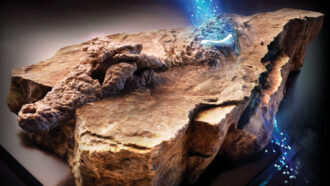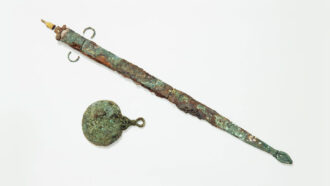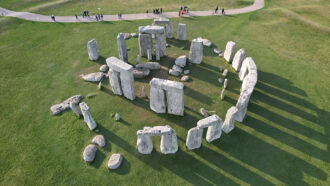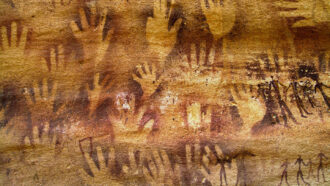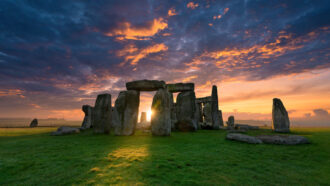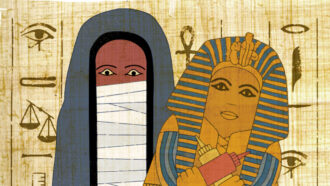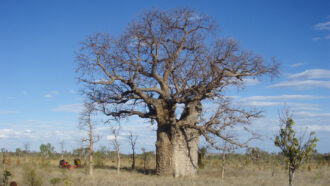ancestor: A predecessor. It could be a family forebear, such as a parent, grandparent or great-great-great grandparent. Or it could be a species, genus, family or other order of organisms from which some later one evolved. For instance, ancient dinosaurs are the ancestors of today's birds. (antonym: descendant)
anthropology: The study of humankind. A social scientist who studies different societies and cultures is called an anthropologist.
colleague: Someone who works with another; a co-worker or team member.
Copper Age: A cultural period in human history that fell between the Stone Age and Bronze Age. It took its name from the fact that some metal-age cultures began fashioning weapons and other tools from copper. It ran from about 4500 B.C. until roughly 3500 B.C.
diet: (n.) The foods and liquids ingested by an animal to provide the nutrition it needs to grow and maintain health. Sometimes this is a specific food-intake plan.
DNA: (short for deoxyribonucleic acid) A long, double-stranded and spiral-shaped molecule inside most living cells that carries genetic instructions. It is built on a backbone of phosphorus, oxygen, and carbon atoms. In all living things, from plants and animals to microbes, these instructions tell cells which molecules to make.
evolutionary: An adjective that refers to changes that occur within a species over time as it adapts to its environment. Such evolutionary changes usually reflect genetic variation and natural selection, which leave a new type of organism better suited for its environment than its ancestors. The newer type is not necessarily more “advanced,” just better adapted to the conditions in which it developed.
gene: (adj. genetic) A segment of DNA that codes, or holds instructions, for a cell’s production of a protein. Offspring inherit genes from their parents. Genes influence how an organism looks and behaves.
genetic: Having to do with chromosomes, DNA and the genes contained within DNA. The field of science dealing with these biological instructions is known as genetics. People who work in this field are geneticists.
genome: The complete set of genes or genetic material in a cell or an organism. The study of this genetic inheritance housed within cells is known as genomics.
glacier: A slow-moving river of ice hundreds or thousands of meters deep. Glaciers are found in mountain valleys and also form parts of ice sheets.
hunter-gatherer: A cultural group that feeds itself through hunting, fishing and gathering wild produce (such as nuts, seeds, fruits, leaves, roots and other edible plant parts). They can be somewhat nomadic and do not rely on agriculture for their foods.
mummy: A body preserved by natural processes or human technology, with some skin and organs remaining.
steppe: The term for a vast, wild grassland that is typically devoid of trees (except near rivers), especially in Southeastern Europe or Asia.
Stone Age: A prehistoric period when weapons and tools were made of stone or of materials such as bone, wood, or horn. This period lasted millions of years and came to an end around 10,000 to 12,000 years ago.
vitamin: Any of a group of chemicals that are essential for normal growth and nutrition and are required in small quantities in the diet because either they cannot be made by the body or the body cannot easily make them in sufficient amounts to support health.
